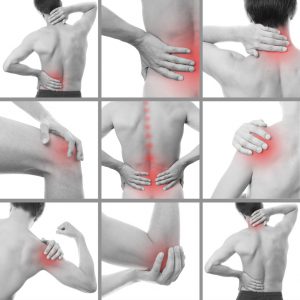10 Nov WHICH IS BETTER; REPLACE OR REPAIR?
Modern medicine aims beyond disease management to develop therapies that restore, repair, and regenerate damaged body structures and functions. The new focus of medical research is firmly rooted in regenerative medicine, which explores the body’s natural healing and regenerative processes to develop treatment options for various diseases. The discovery of stem cells has been a huge turning point in modern medicine. It has dramatically improved the management of chronic and complex disease conditions like leukemia, cardiovascular diseases, immune-related diseases, joint pain, skin wounds, and so on.

Healing by Replacement or Repair
The body is naturally self-healing. Numerous physiological processes are employed to restore tissues, organs, or structures to normal function following an injury or damage. In addition, the body maintains its reservoir of resources, including stem cells used to achieve healing.
Healing of damaged tissue may happen by replacement or by repair depending on several complex factors. By replacement, the body heals non-regenerable or severely damaged tissues by scarring. Repair, which can also be referred to as regeneration, refers to the method of healing which involves completely restoring damaged tissues to their normal states.
The body may choose any of these methods to heal damaged tissues depending on factors like; the type of tissue, the severity of the damage, and so on. For example, tissues of organs like the liver, the skin, the salivary gland, hematopoietic tissues, and gastrointestinal epithelium are known to replicate faster and heal quickly after injuries, while tissues found in the heart and skeletal muscle always heal with a scar.
These principles always come to play in different medical conditions affecting different organs in the body and play a significant role in medical therapies and possible treatment outcomes.
The Role of Stem Cells in Regeneration
Stem cells occur in uncountable numbers in the body. They are the resources used by the body to heal itself. Regenerative medicine in Los Angeles offers a wide range of therapies that explore ways to enhance these natural healing processes. One of the most popular treatments made possible through regenerative medicine is stem cell therapy. Patents in need of cellular therapies for various medical conditions in Los Angeles can now access stem cell therapy in Los Angeles.
Stem cells are unique cells in the body capable of several special functions which include; differentiation into several types of cells and self-renewal. Different types of stem cells can be found in various locations in the body; adipose tissue, bone marrow, the central nervous system, hair follicles, the liver, etc.
Stem cells play critical roles in cell replacement after an injury. When they receive the appropriate signal, they can travel to various locations in the body, self-replicate and give rise o different cell types as required. In certain types of tissues like cardiac tissue, the lost tissues never heal entirely when there is damage. A scar is always left behind leading to future complications. In specific tissue types in the body, the presence of stem cells encourages healing by regeneration. They create new cells which go up and replace the damaged ones. In these types of tissues, regeneration becomes impossible when the injury is so severe that it affects the underlying stromal framework. Factors like the degree of the inflammatory response, the severity of the injury, the presence of stem cells, the duration of damage, and the degree of affectation of the stromal framework play a massive role in tissue healing and determine if a tissue will heal by scar formation or replacement or by repair.
Replacement Vs. Repair – The Goal of Regenerative Medicine
The natural healing method focused on regenerative medicine in Los Angeles is healing by repair or regeneration. Having understood the need for damaged tissue to be restored to its normal state and function; regenerative medicine explores various ways to encourage the body to use this method and achieve treatment for chronic diseases.
Healing by scar tissue formation is laden with numerous complications, especially when it involves critical organs like the heart, kidney, gastrointestinal tract, etc. In many cases, chronic disease conditions can only be relieved when damaged tissue is restored to its normal function. Regenerative medicine breaks the barriers created by symptomatic management to attempt definitive cures for diseases, improved quality of life, disease prevention, and solutions for previously incurable disease conditions with complex pathologies.

Therapeutic strategies in regenerative medicine involve replacement, regeneration, and rejuvenation. These three strategies overlap in the real-life management of disease conditions. For example, cell-based replacement of severely damaged organs or tissues via transplants and cell transfusions is made possible by using the replacement strategy.
Stem cells can also be transplanted into the blood to re-establish the lost function of specific cell types using the regeneration strategy, while biological or pharmacologic treatments can be used to boost the self-renewal of tissues from resident stem cells to promote healing using the rejuvenation strategy.


No Comments